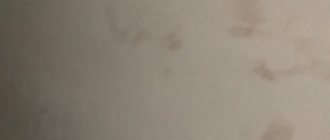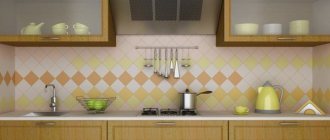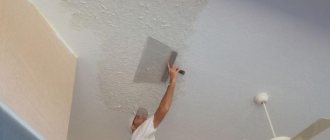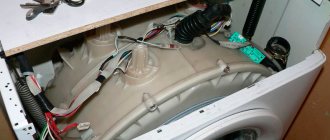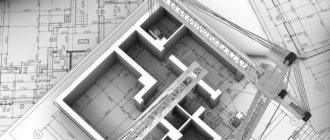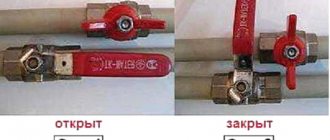From the author: Hello, dear readers. Recently, a wave of renovations has swept across our country. This is happening because our standard of living is rising. As you know, most of our homes require thorough finishing work. There is a way to do everything easily - cover the walls with plasterboard. But this takes up a considerable part of the space in the room, so today I want to talk to you about how to plaster walls.
If at first glance it seems to you that this can be done easily and quickly, then I will not entertain you with false hopes, because the work is not at all simple and takes more than one day. But the end result will definitely please you. Plastered walls will take up only a few centimeters of space, will never disappoint you with a hole from an accidental hit with a ball, and will truly be a “stone” wall and support for your home.
The upcoming work requires the master who will perform it to have an extensive knowledge base and skills. Therefore, do not be fooled by those who tell you “take it and paint it, everything will be beautiful.” No, it won’t, so come to your senses and start studying what we describe below. Otherwise, you will be completely disappointed - walls with waves and alterations. Do you need it?
Types and features of plaster compositions
We should begin our acquaintance with this type of finishing with a “debriefing” regarding what we have to work with and what the strengths and weaknesses of these materials are. I’ll say right away that modern materials are good and comfortable to use. It’s just that what was used to plaster before does not have the negative qualities that they are trying to impose on them.
I'll explain. Nowadays, many websites and portals promote various plaster mixtures that are easy to work with and contain water-repellent components. They are trying to lure us with the fact that they dry quickly and do not “float”, are plastic and do not shrink. In general, there are a lot of fairy tales.
Let's first find out what plaster is. This is a construction mixture of sand and cement or their analogues. It is applied to the wall to give it evenness and provide it with a protective layer, because most often the stone from which it is built cannot provide this.
So, there are only two types of plaster mixtures: standard cement and modern gypsum. Well, let's talk about our “favorite”. Of course, we are talking about gypsum mixtures.
They come in many, many brands, because they are made from the cheapest raw materials. And all the “wonderful” properties are just plasticizers, which are sold in tons and cost three kopecks. So, these mixtures do not have anything special, remember this. Their only advantage is that they are easy to separate, and this can be done quickly with the help of a hammer drill.
What? Do they not shrink? Okay, I agree. Where have you seen cement plaster, which was prepared correctly, shrink? That's it, and she doesn't do it. Plastic? I agree, there is such a thing, cement mortar does not have such quality. It’s just that the plasticity of the cement mortar is achieved by adding ordinary cheap shampoo to it, and that’s the whole secret of this vaunted feature.
So, gypsum mixtures dry quickly, because they contain alabaster, they are easily prepared using a whisk and a hammer drill or a professional mixer, and that’s all. I don't see the benefits anymore. But here are the disadvantages: they absorb moisture madly, that is, they cannot be used to decorate a façade or anything like that, and they are also extremely fragile. Easily crack and burst.
You understand that these advantages do not come close to the disadvantages. And now a control shot in the head of these mixtures. They are extremely expensive! To say they are expensive is an understatement. Look, to prepare 1000 kg of such a mixture, we need 33 bags, let’s lower the water, we’re talking approximately. The average cost of one 30 kg bag is 70 monetary units. And what happens is that in order to purchase one ton of the mixture, we need to spend 2333 monetary units.
And now about the cement mortar. It is made from cement and sand in a proportion of ½. Just so you understand, this is a very strong solution into which you will not put a nail. So, to make a ton of mortar, we will need 330 kg of cement and 660 kg of sand. A bag of cement, that is, 50 kg, costs 50 monetary units, that is, in total we will spend 350 monetary units. Well, sand, 50 kg costs 8 units in the store. That is, 660/50*8=105 monetary units. As a result, 350 + 105 = 455 monetary units.
Do you know what I mean? Gypsum will cost you 2300, and cement 450! Almost five times more expensive! So, what can we even talk about here, if on average a ton of solution is spent on a 2-3-room apartment, and in severe cases, sometimes even two. Buying 30-60 bags of this nonsense is at least irrational.
Now consider the fact that you will have to mix this ton by hand, in a ten-liter bucket. So it turns out that this is an extremely bad job, in which you will also kill the hammer drill. Hiring a concrete mixer costs on average 80 units per day. Given that a 3-room apartment can be completely plastered in two days alone, provided that the beacons are already exposed.
In a concrete mixer you will prepare 100 liters of mixture in one batch, and in a bucket, at best, 8 liters. It is completely impractical to suffer through batches of 8 liters. Some people think that you can mix it in a concrete mixer, but that’s not the case. If you are working alone, gypsum plaster should not be mixed more than one bucket at a time, because it “rises” within 7–10 minutes. Now count: while you knead, while you throw it in, while you pull it out.
In general, I hope this point has shed some light on reality for you. There are only two options in which it is advisable to plaster with such mixtures. The first is if you need to plaster the slopes that you knocked down when you installed new windows. And secondly, if in your bathroom, where you are going to lay tiles, you need to apply a layer of no more than 1 cm. Then yes, you will only need 8 bags, and for such a small amount of work it is not worth dealing with cement.
In all other cases, and we are talking about them today, the use of gypsum mixtures is irrational. Remember this and always dissuade those who want to do such stupidity. By the way, there is something else you should know about cement. In construction stores, most likely, you will not find many brands; usually they sell the cheapest 200th or maximum 300th, this is his brand.
And there are also fantastically strong 1000th and 1200th, sometimes resistant to chemistry and radiation, fire and water. In general, if you go to the manufacturer’s website or ask their representatives in your city, you can easily find all this. And they are not all very expensive, especially when compared to gypsum mixtures. So you can find cement with any properties there.
Properties of plaster
First, let's figure it out: what properties should plaster have?
- The solution can remain in a liquid (working) state for two hours.
- The quality is checked by a two-meter rule, which is applied in all directions to mark unevenness. With average quality, up to five recesses are allowed, up to 3-5 mm deep. The higher the quality, the fewer errors there are.
- The strength after 28 days should be above 20 MPa.
- High adhesion.
- High moisture resistance.
Decorative plaster compositions
Let's move on to consider a separate group of plasters - decorative ones. These are intended not only to create a protective layer, but also to give the wall decorative properties. They do not require final finishing, that is, they do not need to be puttied, painted or wallpapered.
They look beautiful, but I’ll say this: you can’t finish the whole house like this, and their cost is such that it would be most rational to carry out such finishing in small rooms such as bathrooms or corridors.
All decorative mixtures are divided into three main types: textured plaster, structural and Venetian. Moreover, none of the above is intended for leveling walls. Remember, this is just a finishing touch, which is applied in a thin layer to the walls.
Of course, if you have nothing to do, you can level the wall with them, but then you can immediately sell the house, because you will spend an amount approximately equal to its cost on this. If your walls are uneven, but you still want to finish them like this, then definitely plaster them with ordinary cement mortar and apply decor on top of it.
By the way, there are many varieties of simple loose mixture of decorative elements. For example, glass, mica, multi-colored sand and the like. It is sold in bags and is also considered one of the varieties of plaster compositions. Application is simple: as soon as you have plastered the wall with cement mortar, it is sprinkled with this beautiful sand and then pressed in with a small tool. It turns out very nice and not expensive.
Well, okay, not about that now. Let's look at each type separately.
Textured
Most often it has an acrylic or polymer base, and the filler can be either marble chips or ordinary plaster. It also happens, of course, on a cement base, but in this case the color will be gray. The main feature of such plaster is that it is practically the same as cement or gypsum, only with a fraction.
This very fraction, when trying to make the surface even, usually pulls the solution with it, and the effect of a bark beetle is obtained. There are other types of application: fur coat or lamb. It is applied with a special “thresher”, and it is done quite simply. This type of plaster has found itself mainly in covering facades, since its acrylic base does not allow water to pass through.
Structural
A large category of beautiful material, which is a mixture of marble chips, multi-colored sand, wood fibers, quartz, sometimes even dyed threads and similar elements. This finishing material is also hygroscopic due to its acrylic or polymer base, although it may be different. Apply with a spatula or rule. An even decorative coating is formed, which is excellent for finishing a bathroom or corridor.
Venetian
The most beautiful and expensive plaster of all that exists. The process of applying it to the wall is extremely complex and includes many steps. It is unlikely that you will be able to do such work on your own, although if you are patient for many weeks in advance, then anything is possible.
The resulting surface is most often no different from polished marble; there are hundreds of different structures and shades. But since the mixture is expensive, and the work of laying it costs a lot of money, this option is not very widespread.
There are other types of mixtures, but these are all minor design delights that are not common anywhere. In principle, we have passed on all the knowledge that it is enough to have on this material to you. Now let's move on.
Tool and material
Since you have understood the first point, now I will talk about the tool that we will need to work with cement mortar. More precisely, we need the following:
- concrete mixer - of course, you can do without it, only in this case you will need a container like a large basin or trough with a minimum capacity of 50 liters, because it will be difficult to mix in a smaller one. And, besides this, a shovel or a small hoe is more convenient. Although you know, I don’t advise you to think about it, stirring it yourself takes a lot of effort, it’s better to rent a concrete mixer. The solution will be made better, faster, and you won’t spend as much effort,
- buckets for carrying solution and water,
- a trowel for taking mortar from a bucket and applying it to the wall, you can use a trowel instead of a trowel, not an ordinary one, of course, but a plaster one,
- meter or half meter rule - for work in corners or other narrow spaces between beacons,
- a two-meter rule with a bubble level, for placing beacons and working at the main distances between them,
- meter level, bubble level,
- A laser level is an ideal tool for such work. If you find one, you certainly won’t be able to spoil anything, because setting up beacons with it is a piece of cake, everything will be perfectly smooth in all four planes,
- plumb line - an ordinary thread with a weight, to check the operation of the level,
- trowel, or, as it is also called, malka - for final work on grouting the surface,
- nylon thread - to check that the beacons are in the same plane. Only needed if you were unable to find a laser level,
- a sieve for sand - it is necessary to sift it, because every pebble in the way of your rule will become a huge furrow on the new wall, which will then have to be puttied,
- long carrying - when working in apartments or houses, it is best to place the concrete mixer outside, so a long carrying is required to connect it. Although you can bring it into the house, because its average weight is 25–30 kg. It’s very easy for two people to climb even to the fifth floor,
- spatulas for final puttying of walls, or rather, we need two: 10 cm and 40 cm,
- abrasive grater - for polishing the putty layer.
As you can see, the list is quite large, so my advice to you is to take care of it in advance so as not to run around looking for something when your work has already begun and the solution is ready. Now here is a list of the materials you will need:
- cement - it's better to take the highest grade you can find. But no more than the 400th, because already in the 500th cement the drill bits of the perforator begin to burn, you can’t even make a hole in it for a picture,
- ordinary sand, quarry sand. It is better if it is sown. Just be careful not to run into a washed one, so to speak, from the lake. It does not have sharp edges, the grains of sand are rounded and have very poor adhesion to cement. This type of plaster crumbles quickly
- shampoo - acts as a plasticizer, giving the solution plasticity and pliability. If you've seen it, the cheapest one in liter bottles is on the bottom shelves in supermarkets. This is exactly what we need, take 2 pieces if you want to plaster the whole apartment. For 10 buckets of solution we will need 100–150 g.
- plasticizers are not particularly needed, but if you add them, they will not be superfluous. There are different types: both liquid and crumbly. They can give the solution resistance to fungi, plasticity and much more,
- deep penetration primer - for the best bonding of surfaces. If you plan to work on aerated concrete or anything else smooth, then you cannot do without such soil as concrete contact,
- plaster reinforcing mesh. This is no longer a serpyanka, but a metal mesh with a fine centimeter mesh,
- metal beacons. Decide on the height yourself: if the layer is small, then 7–10 mm will be enough for you. If it’s big, then choose the appropriate beacons,
- putty for finishing and for attaching beacons.
Well, we’ve sorted out the materials, and now it’s time to move on to the work.
Using primer
Some self-taught craftsmen believe that priming is completely optional. Or they simply don’t know about its existence.
As a result, a new layer of plaster is placed on the surface that has not been treated with a primer. Particles of old material, dust, paint, sand, dirt remain free underneath, reducing adhesion.
At the slightest load, say, a blow from the front door or children running around the apartment, the absence of a binding layer makes itself felt and the plaster begins to crumble and crack. That is why it is better to use a primer.
Preparatory work
We will begin the story of how to do this work with our own hands by preparing the room. Many people skip this step, but in vain. It is also necessary, like anesthesia before surgery, because ignoring this stage can lead to huge problems. So, to prepare, follow these steps sequentially.
- Remove all furniture from the room. The heaviest thing - what doesn’t give in - can simply be moved to the center and covered with film.
- If you do not want to damage the floor during the work, also cover it with film.
- Assess the scope of future work. For example, like this: if you want the walls to be painted, and at the same time take up the least amount of space in the room, then you will need to knock down all the current plaster. If you want the walls to be painted, but don’t want to knock off the old plaster, then remove all the wallpaper right down to the concrete base. If the walls are bare and there is nothing on them at all, then it’s generally good, because you will bypass this point.
- If there is old plaster on the walls, but you do not intend to knock it down, then evaluate its condition. You need to tap it for the presence of voids. If you find such a place, knock down that area until you reach one that has good grip on the main wall. If you don’t do this, you will face sad consequences, because you are loading a layer that doesn’t hold up at all. And he, in turn, will weaken the new one. Then both of them may fall off at once.
- Once the walls are knocked down, remove everything and do a slightly damp cleaning. There should not be much dust; it will settle on the walls and interfere with the connection of the mortar with the main wall.
- Carry out the required electrical and plumbing work. The electrical wiring is simply laid over the top, and the wires are secured to the putty. If you need to plaster the pipes, then make grooves and lay them. If the layer is small, then make holes for sockets and junction boxes using a hammer drill and a crown.
- Remove all small nails and moldings from the walls. In general, everything that can hinder us.
- Prime the wall.
The preparations are done, let's move on.
Why plaster doesn't stick to the wall and how to fix it
Sanding walls is the most popular type of finishing work. Such work belongs to a simple stage of construction, however, situations arise when the plaster cracks, peels off, or simply does not stick to the wall. How to fix it?
- Properties of plaster
- Preparation of plaster
- Reasons why plaster does not stick to the wall
- Plastering aerated concrete blocks
- Plastering other surfaces
Display of beacons
And now we have reached the hardest work that lies ahead of us. You see, correctly placed beacons are 70% of the whole task. Once you deal with them, you will only have a day and a half of work left, if we are, of course, talking about a 2-3-room apartment. But setting up beacons in such an area without a laser level takes 2–3 days of work.
So, for you to understand: you not only need to set them in a flat plane, but you also need to kind of model 4 new planes in the room. When installed, a room may have walls of different lengths, which is why the resulting angles are not strictly right. Look at the picture:
As you can see, the room does not have right angles, which is why the walls are of different lengths, and in general, all proportions are spoiled. We used black dots to show the places where the corners of the walls should have been. Of course, we depict everything schematically for you to see. But in fact, these discrepancies are usually no more than 2–3 cm, but we need to correct this too. We need to arrange the beacons in such a way that after finishing the work the layer looks like this:
We used a blue line to indicate what kind of room we should end up with. As you noticed, in several places we will have large layers, and in others there will be none at all. In practice, you are unlikely to find a perfectly flat wall. You will have to plaster all 4.
So, now your main task is to measure the correct shape of your room. The easiest way to do this is with a laser level, but if you don’t have one, then you will need to use the old-fashioned method.
It consists of taking 8 screws under a plastic dowel. Use a hacksaw to cut the top edge of each of them so that the nylon thread fits perfectly into it, then screw one screw into each corner of the room from below at the same level and from above at the same level. Pull the thread so that, lying in the groove, it forms a right angle of 90° together with the screw. And you begin to “catch” it by screwing in or unscrewing any of the screws.
The work is difficult and long, since you will have to shift two planes, lower and upper, this is done using a plumb line. Once you do this, move directly to the wall plane and beacons.
Cut to the required length and spread the putty. Apply a solid line of putty directly under your thread, place a beacon in the putty and adjust it in the solution so that it barely touches the thread, touching only its fluff.
The lighthouse must be leveled according to the general rule with a level, that is, a two-meter level, and as soon as you have secured it, the work must be checked using plumb lines. And let me remind you again, this is very difficult to do. When I didn’t have a laser level, and indeed they didn’t exist then, I could spend a whole day on one room using this method.
Well, of course, we will eventually get perfectly even proportions and the like. If you don’t need such painstaking work, you can make small allowances of a few millimeters. And here’s another thing: some fasten the beacon with screws, and others with single “slaps” of putty or alabaster.
Well, this is all wrong. Yes, you can prop it up under the mortar with screws, but placing it on several points of alabaster is strictly forbidden. The fact is that when we “pull” the solution with the rule, we will press on it with great force. And just in the place where we don’t have putty, everything will bend, thereby forming a wave on the wall.
So don’t skimp on the putty and lay it in a complete line. Once the beacon is laid and adjusted, this line of the mixture needs to be shaped into a pyramid with a spatula, that is, an isosceles triangle with a beacon at the apex.
This is how you will have to do all the walls. You can set the distances between the beacons as you like, but no more than 1.7 meters, because stretching such a huge layer is very difficult and requires great strength. Personally, I always take 1–1.2 meters, for me this is optimal.
Once the beacons are laid, do not forget to prime everything again. And now we finally move on to the plaster.
Preparation of plaster
To achieve the above plaster parameters, it is necessary to properly prepare the working surface:
- set beacons according to level;
- apply a layer of primer to improve adhesion properties;
- thoroughly clean the surface from dust and dirt;
- make notches (if necessary);
- attach a mesh to complex uneven surfaces;
- Reinforce the corners with painting mesh.
Carrying out basic work
If until now you have done everything correctly, then you are left with a piece of work that even gives you some pleasure after these beacons, in which you definitely put a good portion of your nerves. So, in order to do everything correctly, go through the following points sequentially.
- If not primed, prime and wait until the layer dries.
- Apply reinforcement.
- Sift the sand.
- Start diluting the solution. Throw 4 buckets of sand into a concrete mixer and 2 buckets of cement there, add a little less than a bucket of water and turn on the device. Check the solution visually. It should be of such a consistency that it can lie on the wall without slipping. You can turn it off periodically, take the resulting mixture and experiment. Literally after the 4th batch you will already get your bearings. As soon as you see that everything is well mixed, add 100 ml of shampoo and, if purchased, a plasticizer. Continue stirring for another 5 minutes.
- Pour the solution into buckets, turning the mixer over, and carry it to the wall.
- Use a trowel or scoop to scoop up the mortar and throw it on the wall with a strong, energetic movement. You should get a powerful “slap”, only in this case it will stick well to the wall.
- As soon as you have applied approximately 30–40 cm between the two beacons, take the appropriate rule and begin to pull out your solution with a strong upward movement. You will see that it hardly moves, it creaks, crackles and crumbles. That's how it should be. Start giving your movements a slight “rolling” from side to side, this will make the pulling process easier.
- As soon as everything is pulled up, start doing the same downwards, as if tearing off the excess. This is what is called - ripping off.
- You pulled it out, now you see the voids that have formed? Again, throw the solution into them with a slap like that, and do it all over again.
- If you see a certain hill along which you move with a rule, and it appears again, then it is an air bubble. Take a small spatula and make a cross in this bubble, letting out the air.
- As soon as everything in the whole room is done, and the solution has dried a little, make the same one, but a little liquid, and using a small spoon in a circular motion, begin to rub it into the surface, as it were, this will give it greater evenness and smoothness.
- Once everything is done, wait a few days and as soon as it dries, you can start working with putty.
Well, that's all, friends. I agree, the work is painstaking, but by doing it yourself, you will save a lot of money. Because such work now costs a lot of money, especially if we are talking about halls or sleeping quarters, which have rather large areas.
That's all, and in conclusion I would like to say: our article is not a guide to action, it is just an introduction to the topic and what you have to do, therefore we do not bear responsibility for your actions. To consolidate the information, watch the video, it won’t be superfluous. Good luck!
Specifications:
| color | grey |
| Layer thickness allowed when sealing shells and potholes on the surface: up to 60 mm | |
| Recommended layer thickness for walls | 10-30 mm |
| Maximum particle size | 1.25 mm |
| Viability of the finished solution in the container | at least 2 hours |
| Water consumption per 1 kg of dry mixture, approximately | 0.16-0.2 l |
| Consumption of dry mixture for a layer thickness of 10 mm | 16-18 kg/sq.m |
| Compressive Strength | not less than 5.0 MPa |
| Strength of adhesion to the base (concrete) at the age of 28 days | not less than 0.4 MPa |
| Frost resistance | F35 |
| Water absorption when saturated with water for 48 hours and samples are completely immersed in water (for outdoor use): no more than 8% | |
| Vapor permeability resistance coefficient | 0.1-0.15 mg/m h Pa |
| Full cycle time | 8 ocloc'k |
| Operating temperature (for outdoor use) | from -40ºС to +60ºС |
